Thousand Polleras Parade
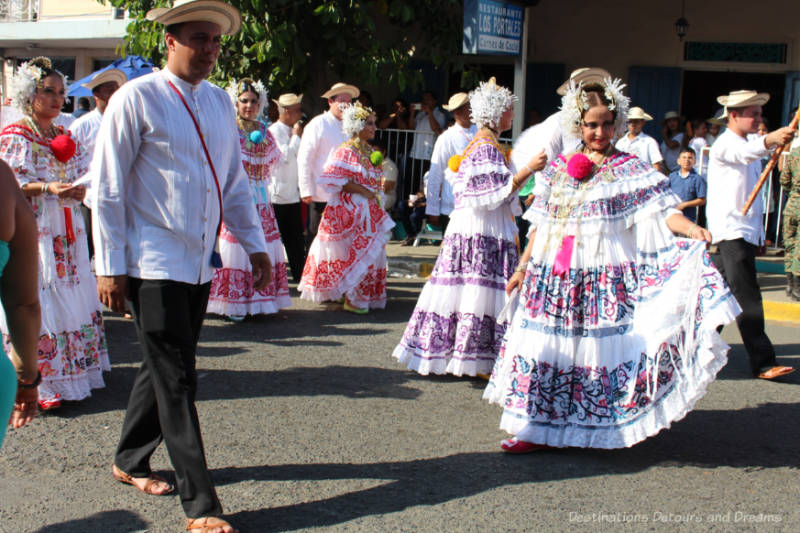
Festival celebrating traditional dress in Las Tablas, Panama
The Azuero Peninsula in Panama is known for its festivals. One of the most colourful is the Thousand Polleras Parade (Desfile de las Mil Polleras) in Las Tablas. Desfile de las Mil Polleras is a one-day festival held on a Saturday in mid-January. I feel fortunate to have had the chance to attend this festival.
The pollera is a traditional Panamanian dress originally of Spanish origin which has evolved over time. I’ve read different versions of its origins. One said it was first used by female slaves in the Darien province during the earliest Spanish settlement. Another version suggested the dress was an imitation of Spanish ladies. Whatever its origin, it is a beautiful dress and and a local tradition at special events.
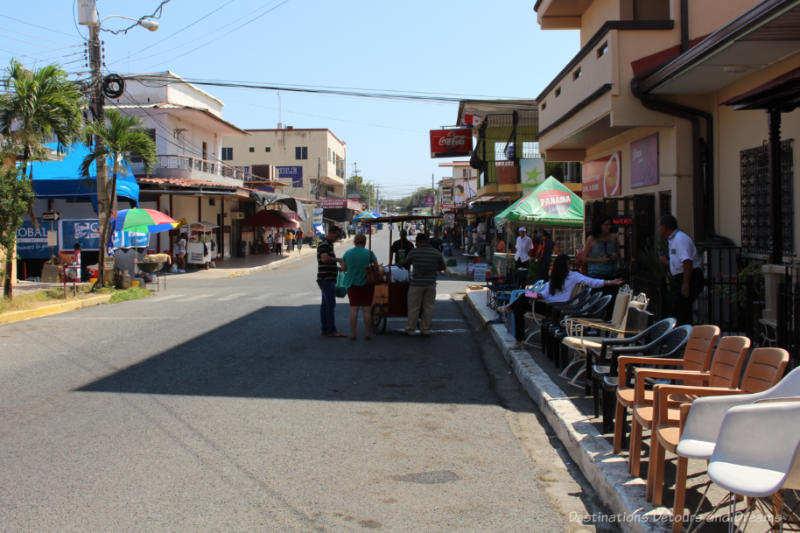
Las Tablas is the capital of the Los Santos province with a population of around 9,000 people (as of the 2010 census). It is recognized as a centre of Panamanian folk culture. My husband and I arrived in Las Tablas just before 11:00 am on the day of the parade. The town already had a festive air. The main streets were closed to vehicular traffic. Empty chairs lined the street, reserved for later parade watching. Craft stalls were getting organized. There were street food vendors on every corner.
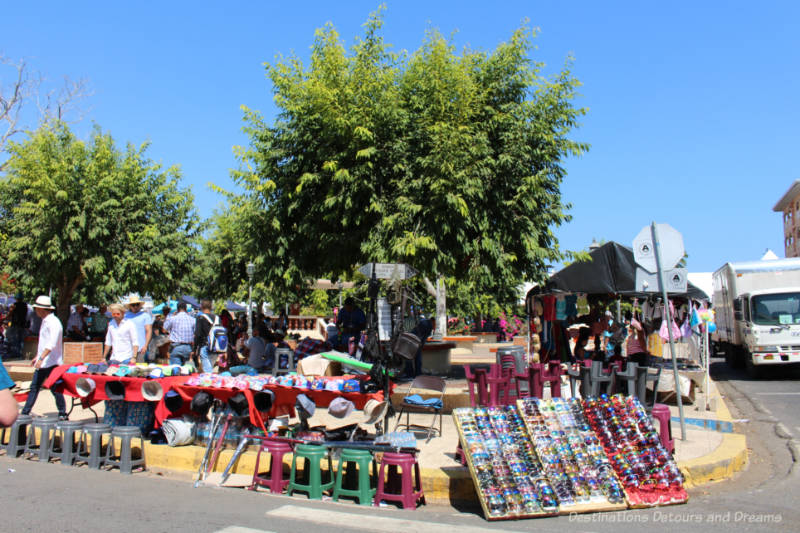
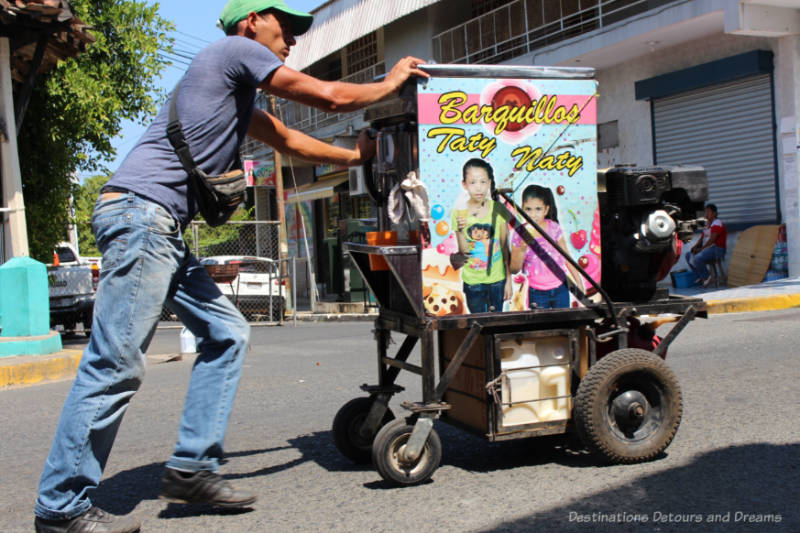
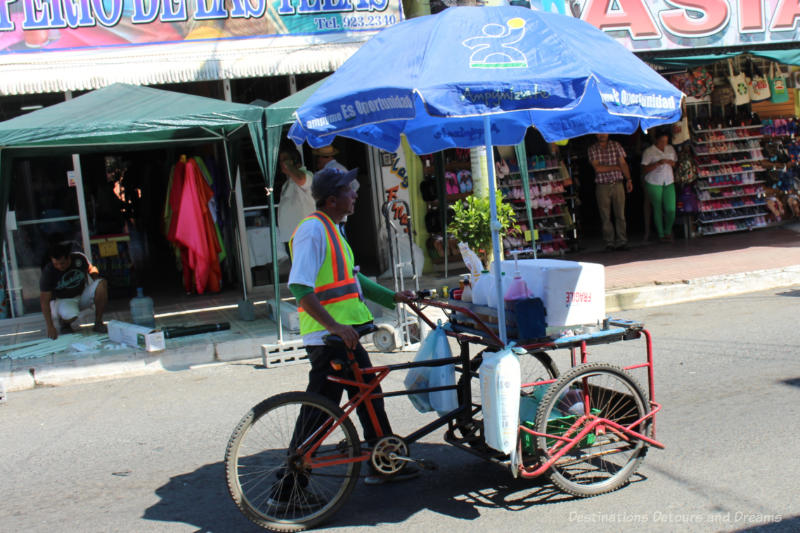
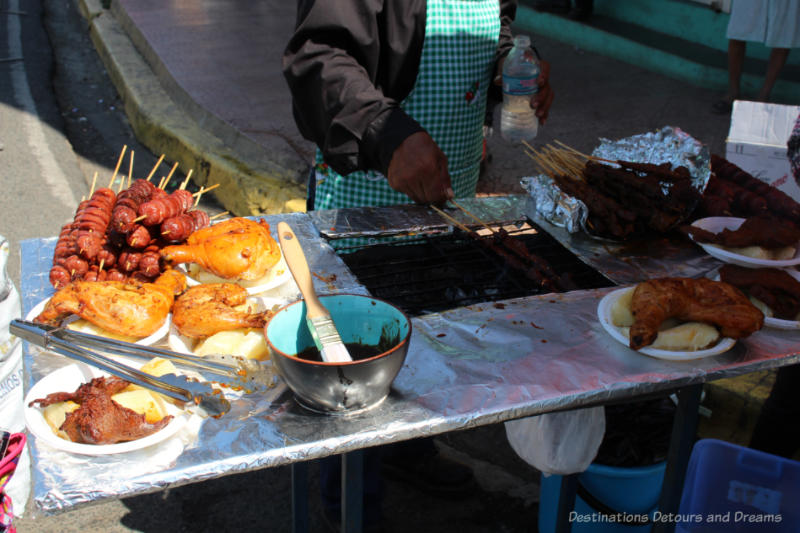
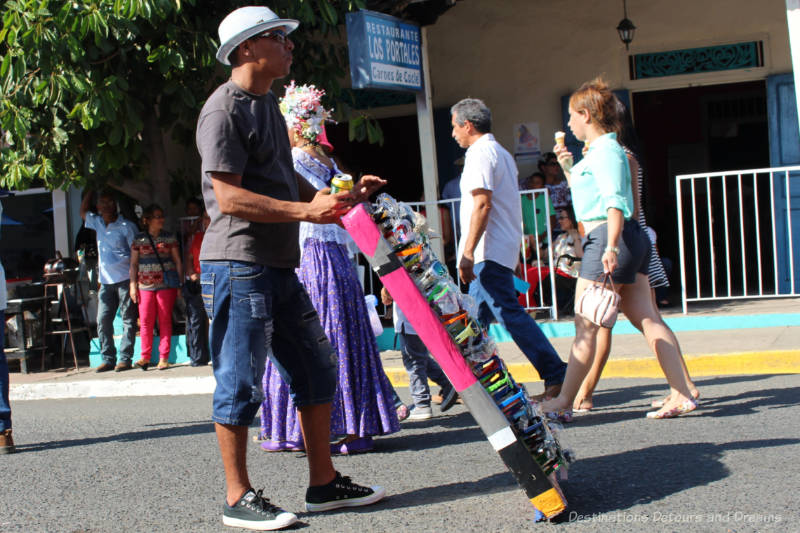
We spotted the occasional woman already decked out in her pollera outfit walking among the others on the street. These women stopped and posed, holding out their wide skirts, for anyone who wants to photograph them. It was also common to see them pose with a spectator for a photo.
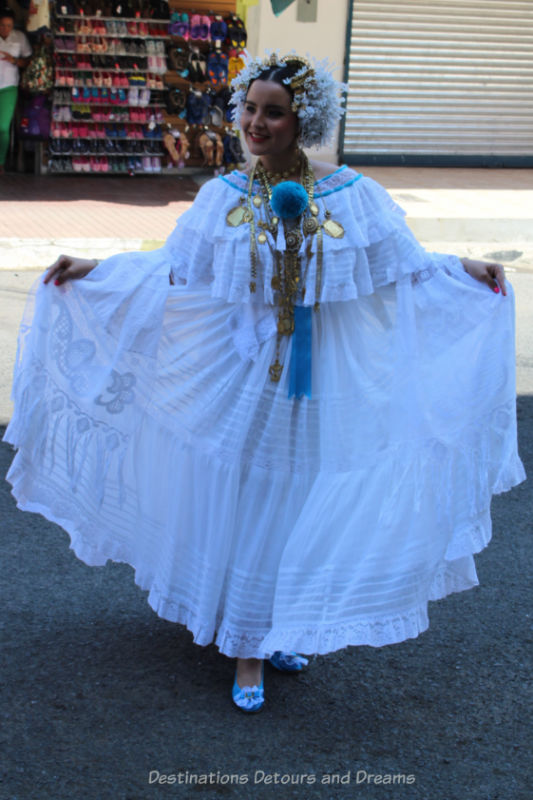
The formal pollera is made of white fabric (linen, cambric or voile) with embroidered designs. Ribbons called “gallaradetes” hang from the waist. Pompoms hang at the front and back from neck bands in the blouse. Soft satin slippers of the same colour as the pompoms are worn. Hair is parted and braided behind the ears and decorated with beaded ornaments known as “tembliques”. The outfit is topped off with many gold chains. The all-white pollera with embroidery done in white thread is for important events, such as weddings and sweet 15 parties. The Pollera Montuna (or working pollera) consists of a full skirt made of calico. A “pintao” hat is worn with the outfit.
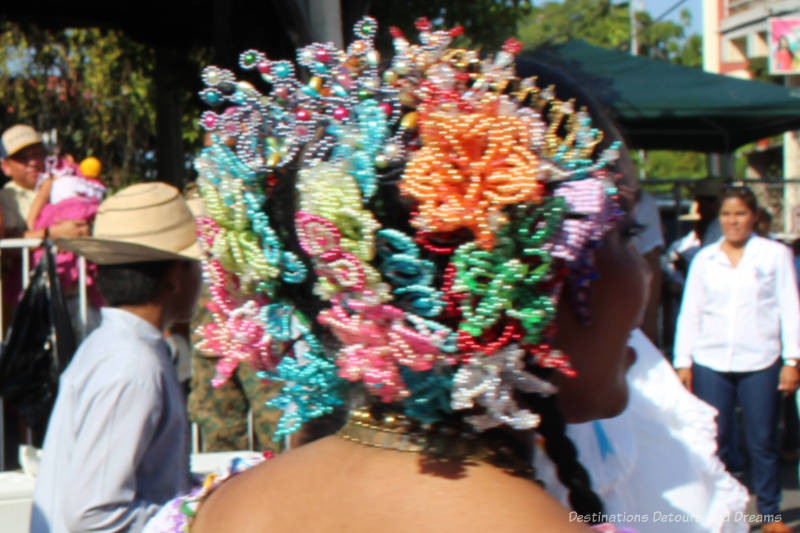
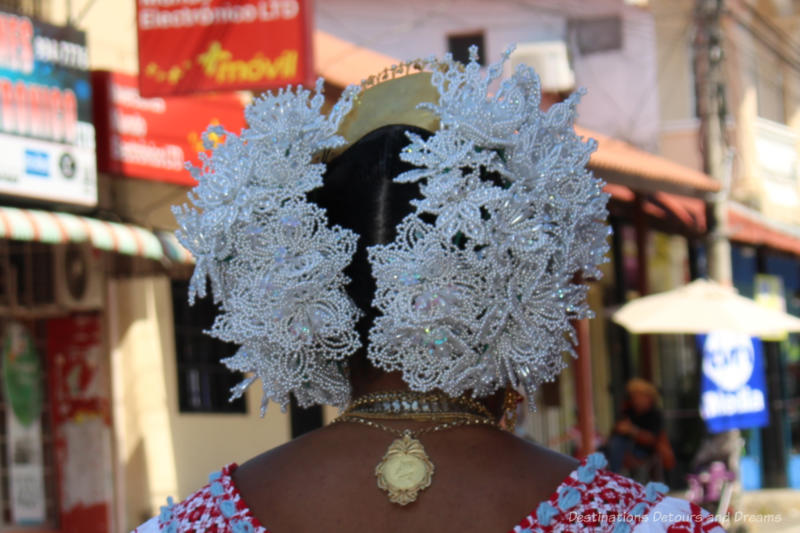
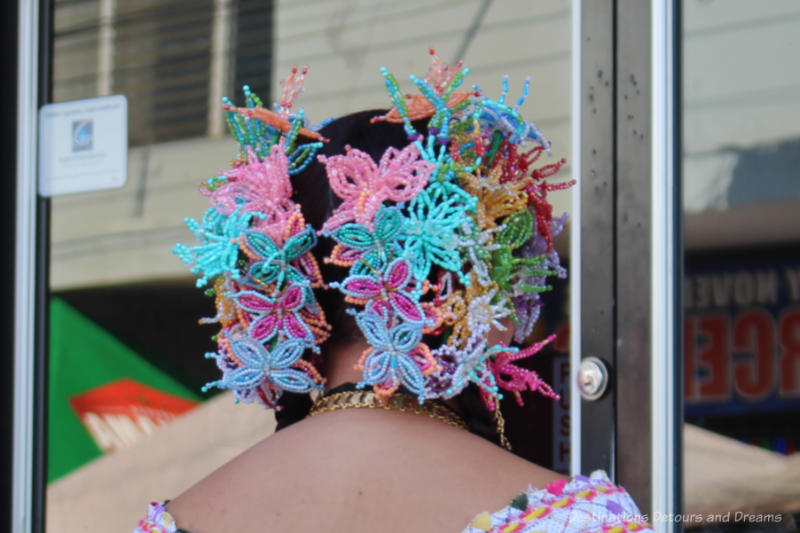
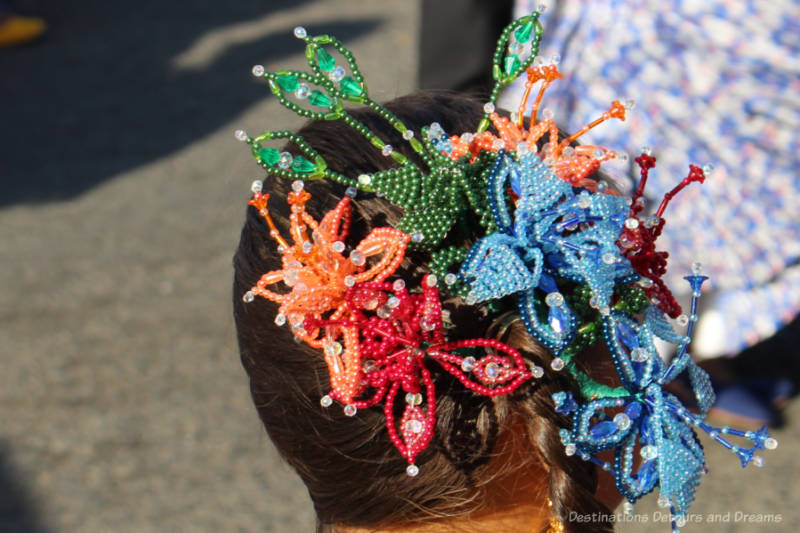
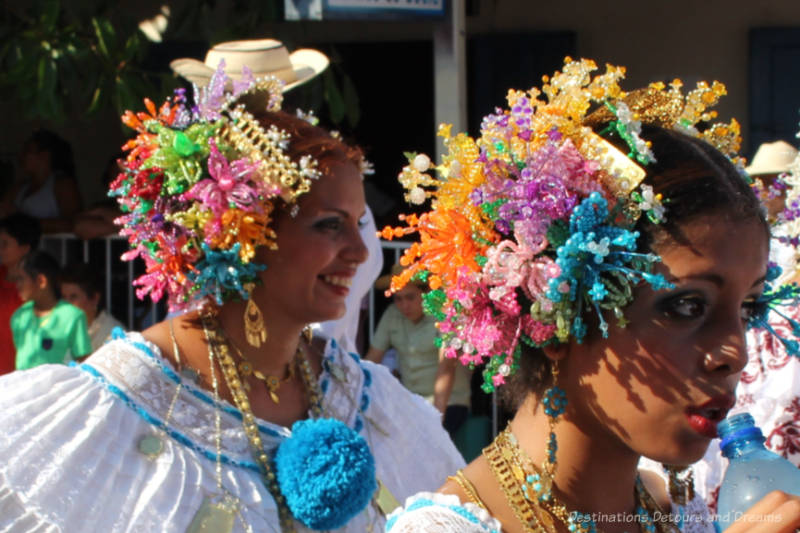
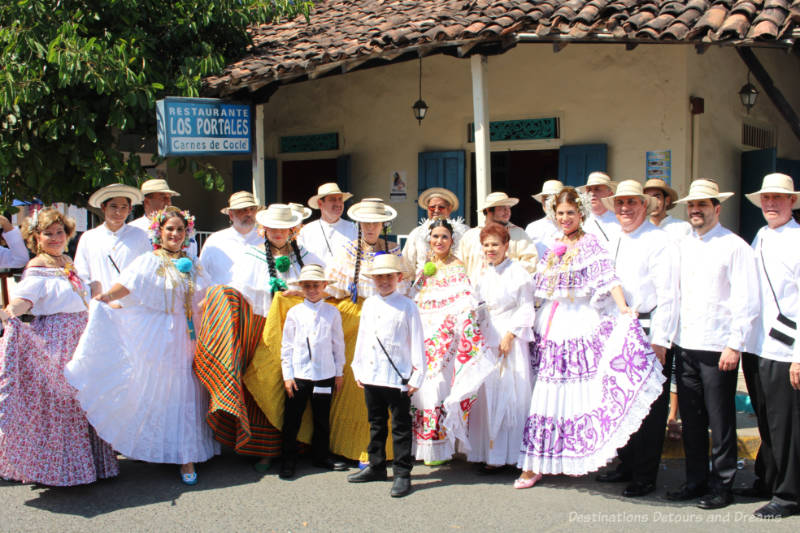
The formal montuna outfit for men consists of a white long-sleeve shirt with a closed neck, long black pants, a traditional straw hat with black lines, a small bag hanging to the left, and black and white shoes. A more casual traditional men’s outfit is composed of a long-sleeved shirt with embroidery on it, knee-length pants, a white straw hat, sandals, and a long knife wrapped in a leather case.
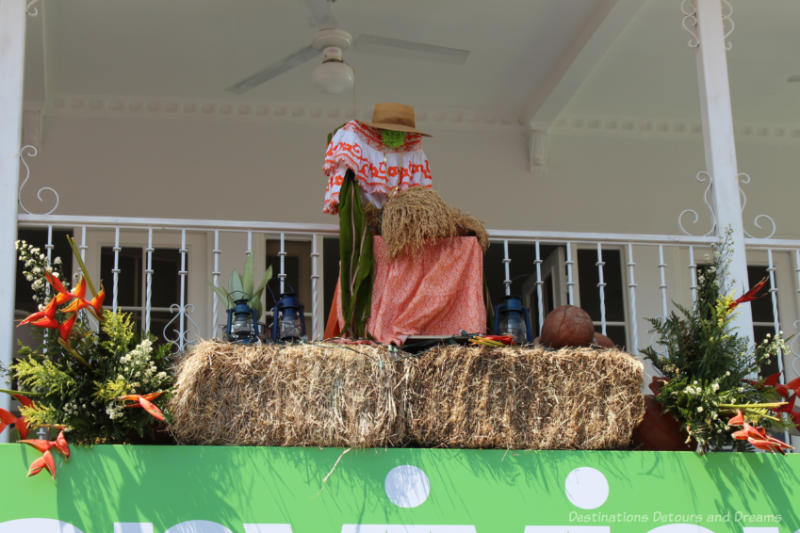
We wandered through the streets and in the shops for a while. We had something to eat. By 12:30 pm many of the chairs alongside the main street were filled. We found a piece of curb in a shady spot and sat down to watch and wait. At 1:00 pm a band began playing a few buildings down. Loudspeakers on the patio behind us blasted music. More and more people filled the street, walking, visiting. Some were in traditional dress. We expected we’d have a couple of hours to wait for the parade, but the street already seemed to be a party.
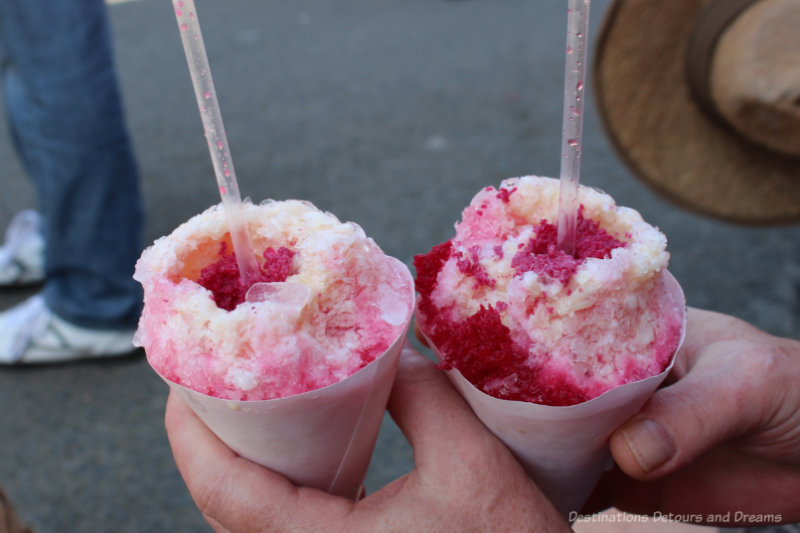
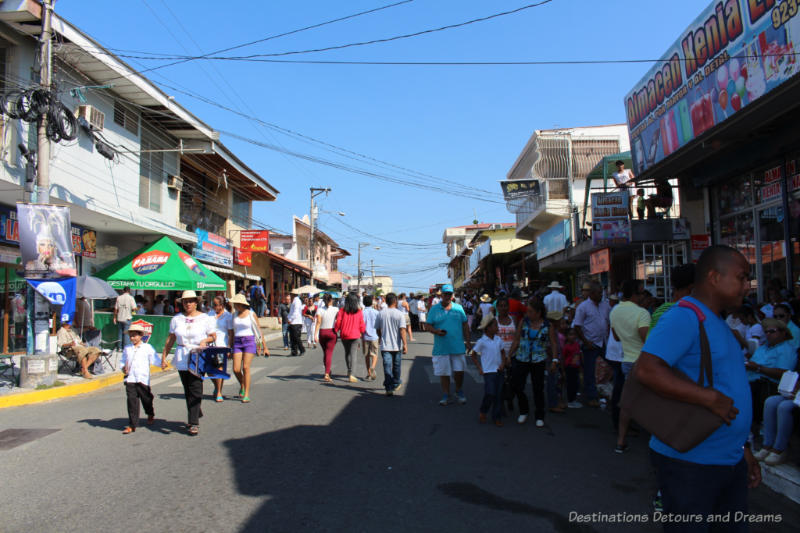
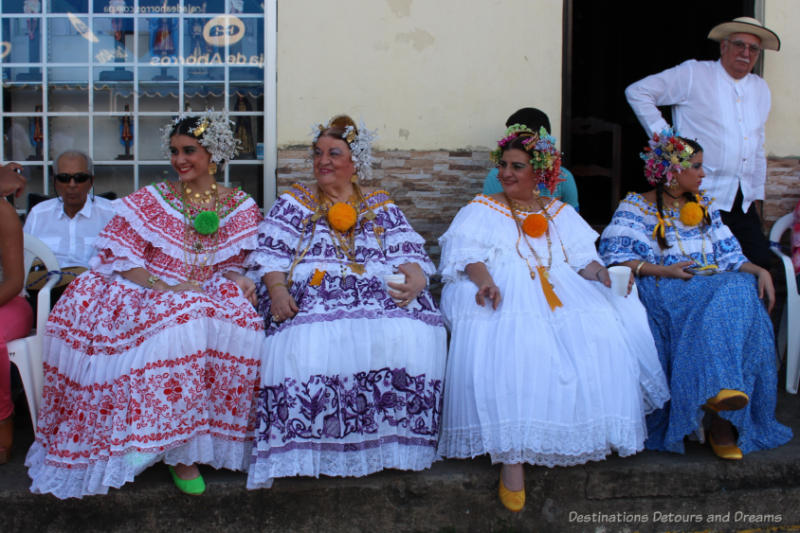
At around 3:45 pm, the parade started. I subsequently learned this was a later start time than in previous years.
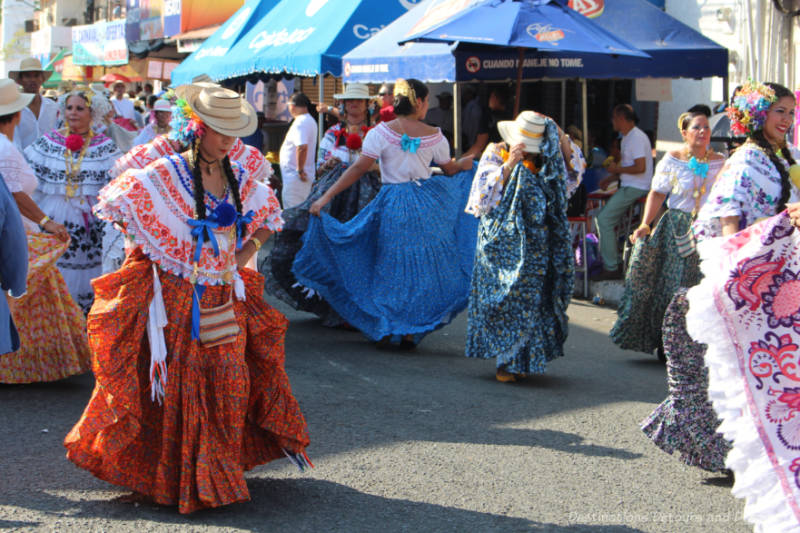
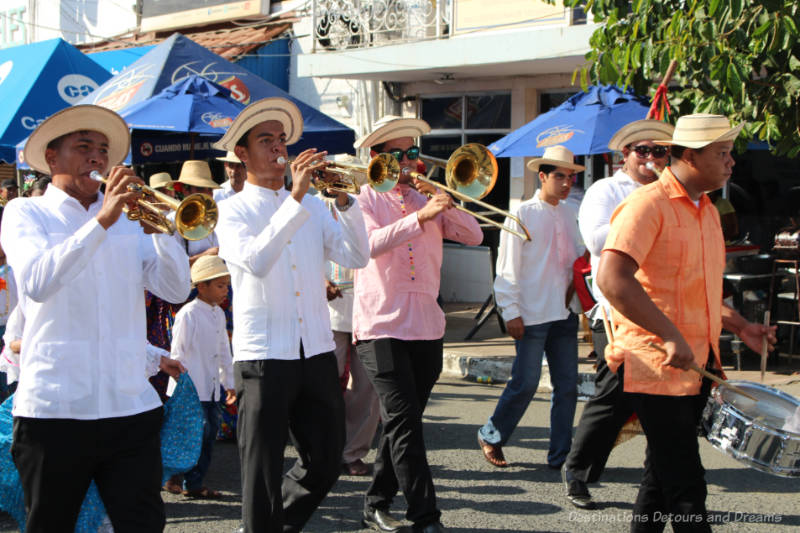
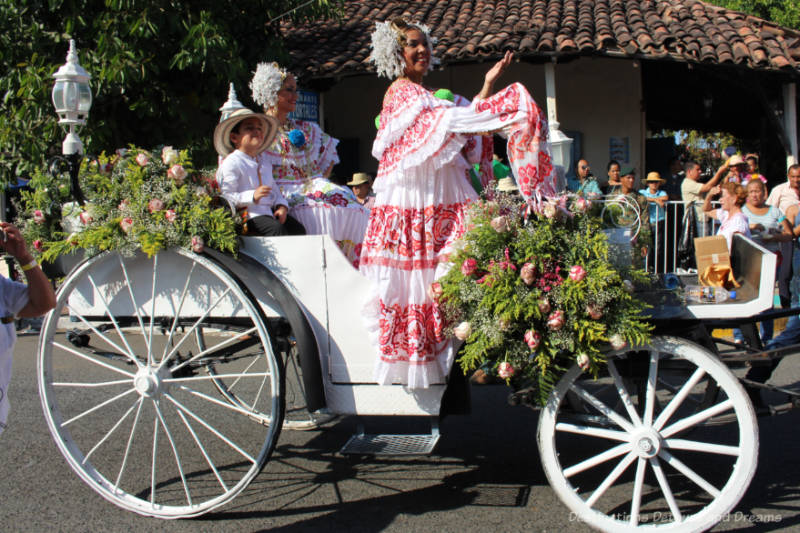
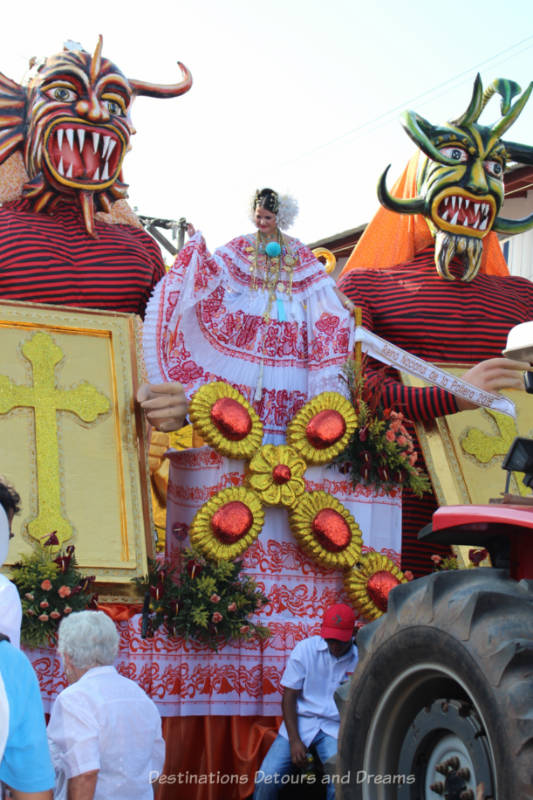
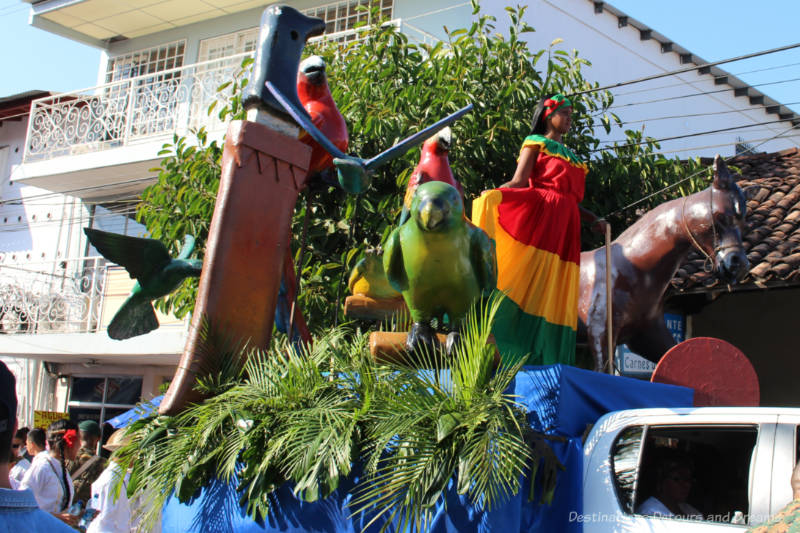
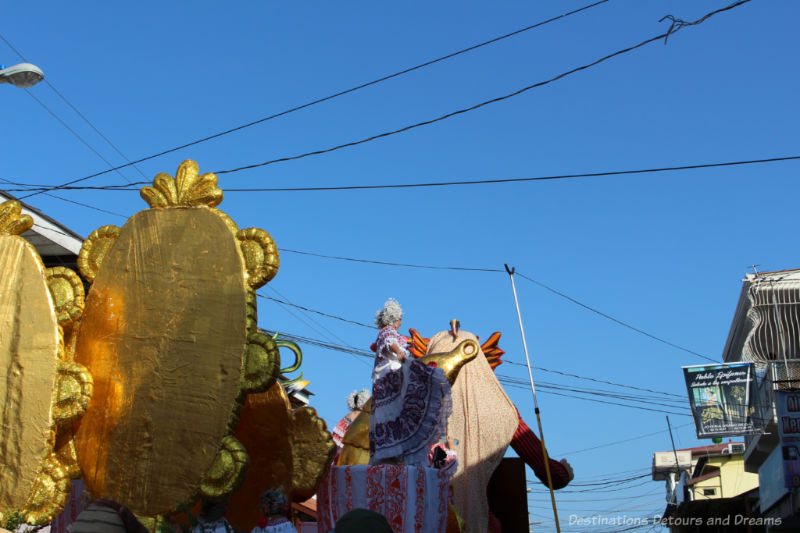
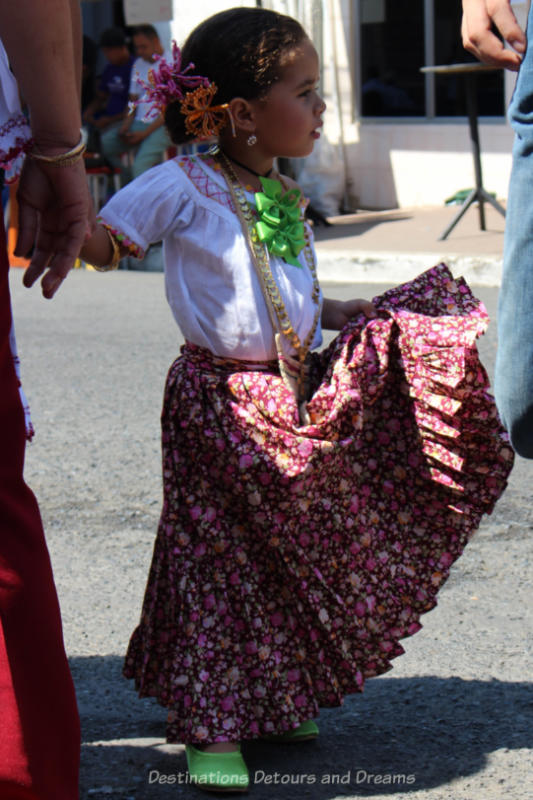
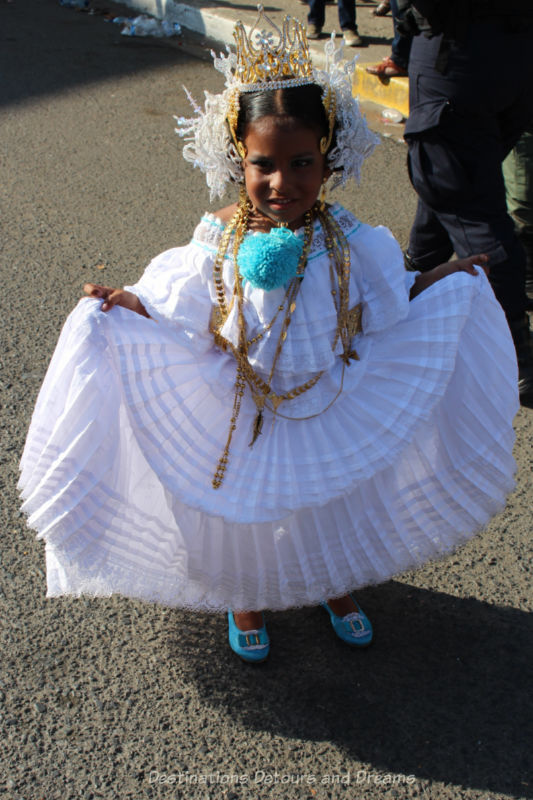
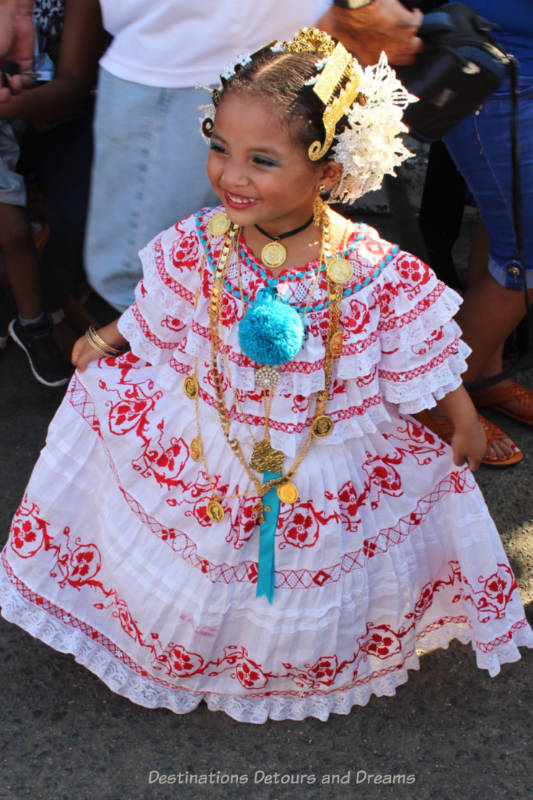

At 5:15 pm the parade was still going strong, but we were very hot, having lost our shade some time before that. We pushed our way through the crowd into a restaurant down the street for a quick bite to eat before catching the bus back to the town we were staying in. As the bus pulled out of town shortly after 6:00 pm, I looked back to see the parade still in progress. We passed an outdoor party area in final preparations – speakers, bar area stocked. The party would go on into the wee hours.
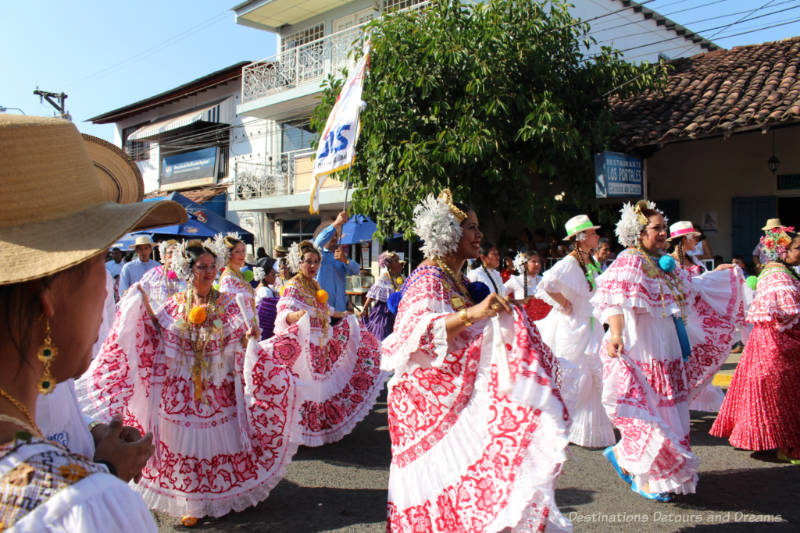
There are 12 yards of fabric in one pollera. A formal pollera can take up to 8 months to make and cost between $4,000 and $10,000. Many are handed down from generation to generation.
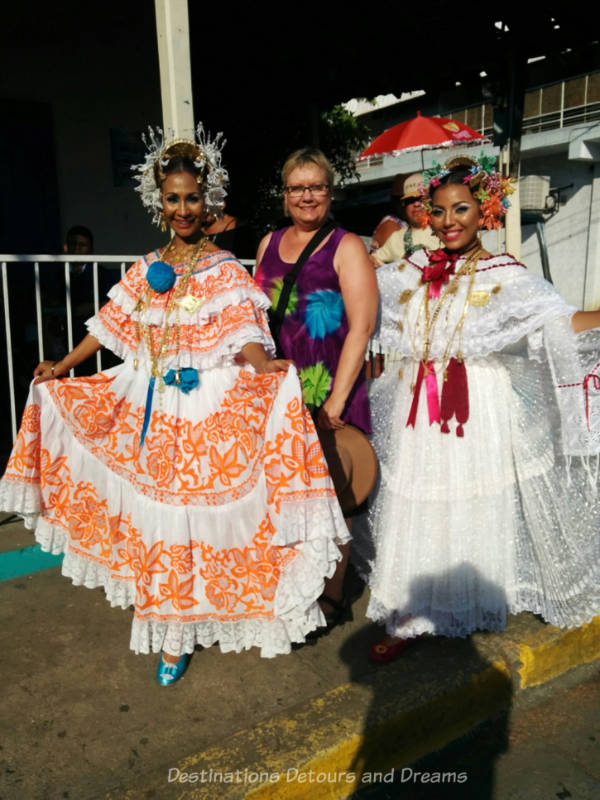
Never miss a story. Sign up for Destinations Detours and Dreams free monthly e-newsletter and receive behind-the-scenes information and sneak peeks ahead.
PIN IT
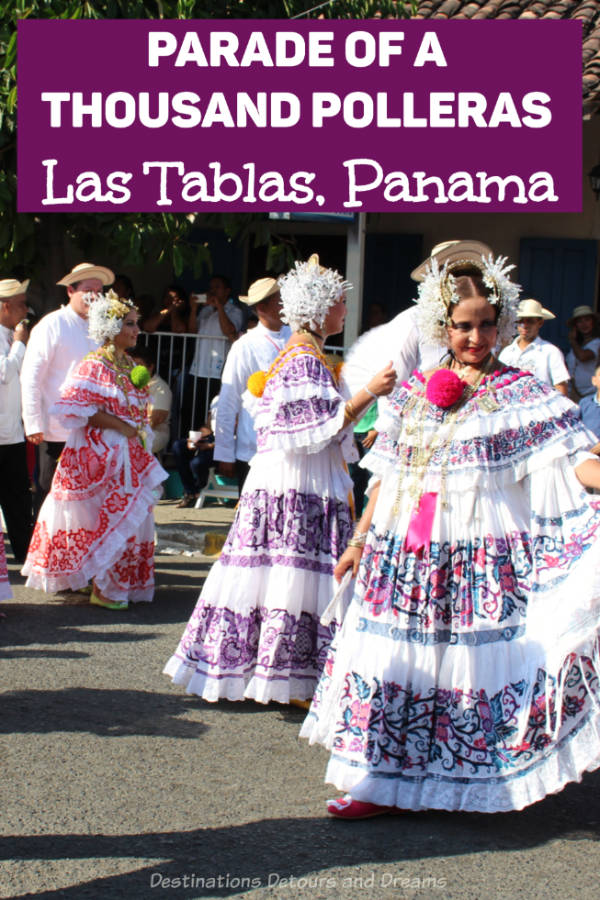

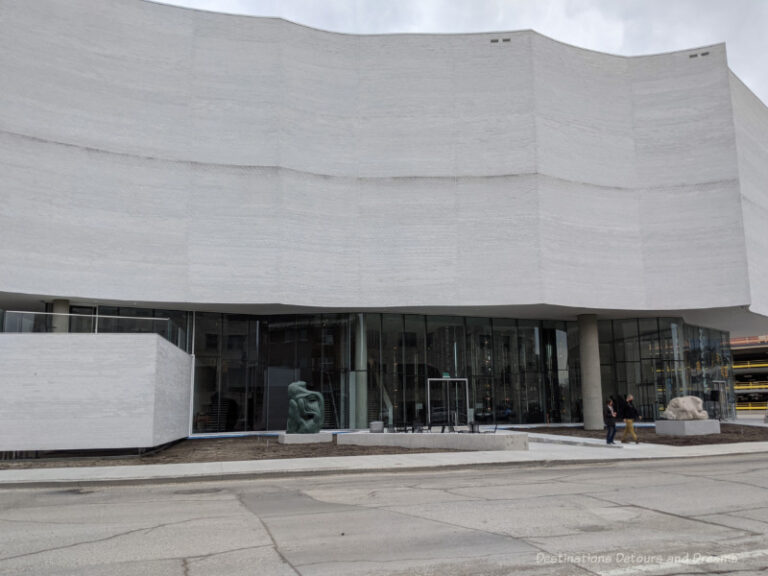
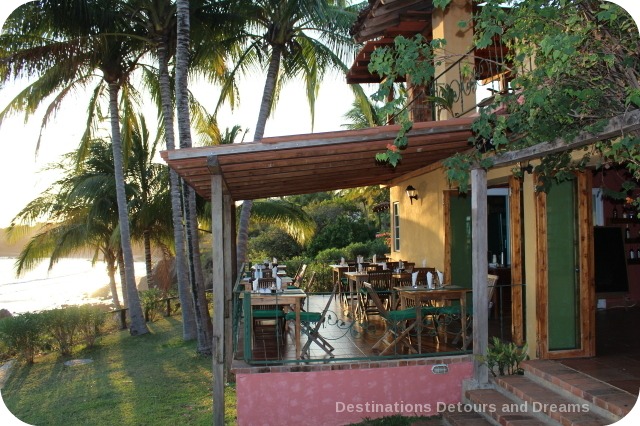
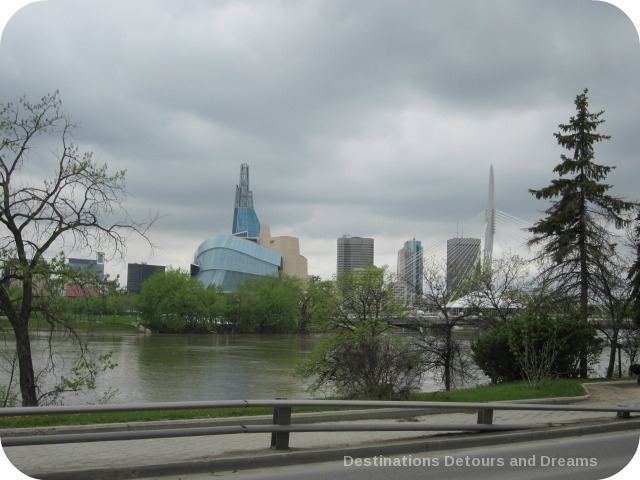
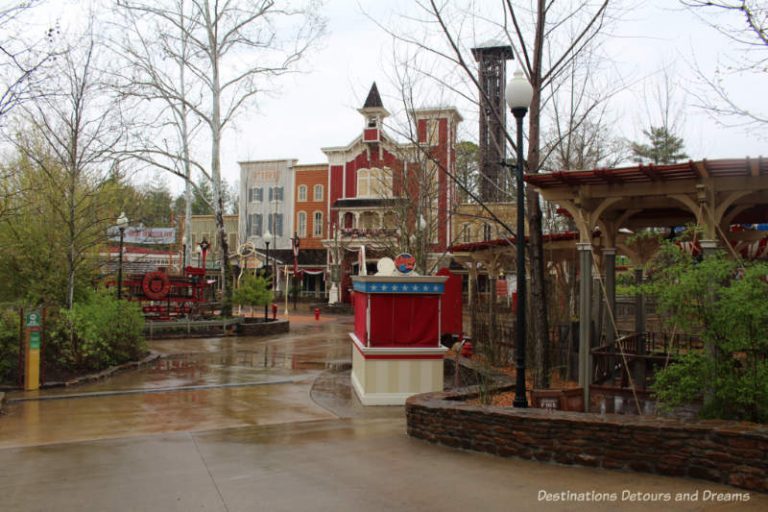
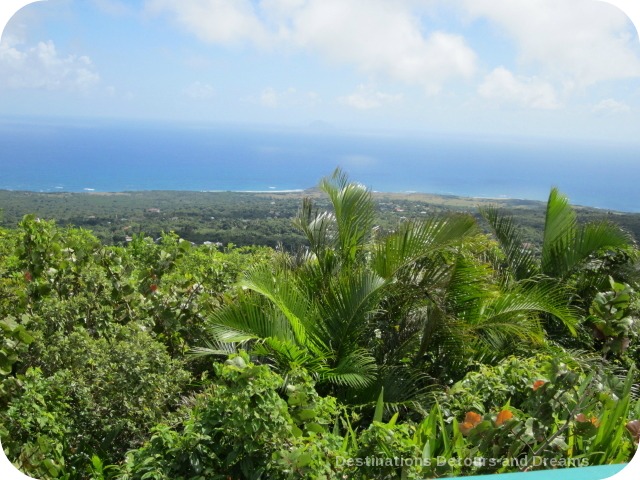

Those little girls in their dresses are adorable. Did you get the sense that the tradition of making polleras is going strong? So many of these high-skill, labour-intensive traditions are not embraced by younger generations.
Deb, the little girls are adorable aren’t they? I think the tradition is still going strong.
Polleros are beautiful and so are your photos of them, Donna. Loved the color you captured from spectator to food to the beautiful young girls. A full-of-life post, for sure!
Jackie, it was a very colourful and fun day.
Polleros are just gorgeous…I can’t imagine the skill it takes to make one! The little girls are so adorable and I do the tradition of passing these down through the generations.
Jacquie, the pollera were gorgeous and a delight to see.
They do love their parades in South and Central America don’t they? In Bolivia there was almost a parade a day. I’ve never heard of the Polleros in Panama but it looks like a fascinating cultural tradition.
Michele, there is such a simple almost-childlike joy and sense of fun surrounding the parades that it is infectious.
That’s a lot of fabric! What fun.
Kristin – definitely lots of fabric. The women also wore a lot of carefully applied make-up. It was HOT and they must have sweltering but they didn’t show any signs of discomfort.
The polleras are beautiful! And it appears they look great on all body types! I love the hybrid between the Spanish colonial and the indigenous style. The temblique head ornament is so unusual, too. How fascinating and fun!
Betsy – you’re right. The polleras looked beautiful on everyone.
What beautiful dresses! You can see how much work, love and money go into making them. You certainly turned out being at the right place at the right time.
Irene, I didn’t know about this festival before I went to Panama and was very happy to learn about it and know it was happening near me. A lot of fun.
Thousand Pollers Parade looks to be such a vibrant and exciting festival. The dresses are gorgeous. So much effort must have gone into making them. They must be heirlooms! The Raspados look yummy too!
Johanna, the amount of work and love which must have gone into the dresses was awe-inspiring.
I hope traditions like these never die. It makes travelling so much richer when we can encounter festivals like this. The little girls look so cute in their dresses.
Janice, the little girls were so cute.
Wow, twelve yards of fabric in one pollera! And considering the time and cost involved, no wonder they are handed down from generation to generation. What a fascinating day, thanks for sharing.
Veronica, I imagine would be quite a moving experience to dress your daughter in a pollera which has been handed down from your mother.
The dresses are so beautiful and festive. It looks like the great traditions. Thanks for sharing.
Sabrina, definitely beautiful and festive. I couldn’t help but smile when I saw a woman decked out in her pollera.
We stayed in Guarare, a small village next to Las Tablas a couple of years ago in July (even hotter than when you were there!) and were lucky enough to see another Festival of the Polleras. You’ve captured the celebratory atmosphere of the event beautifully and brought back some great memories! Anita
Thanks Anita. I’m glad this brought back great memories. It’s hard to imagine these women wearing all that fabric and make-up in weather even hotter than we experienced!
I’m astounded by the cost of the dresses and also love the heritage of many of them. They are true works of arts. This parade must be the longest one!